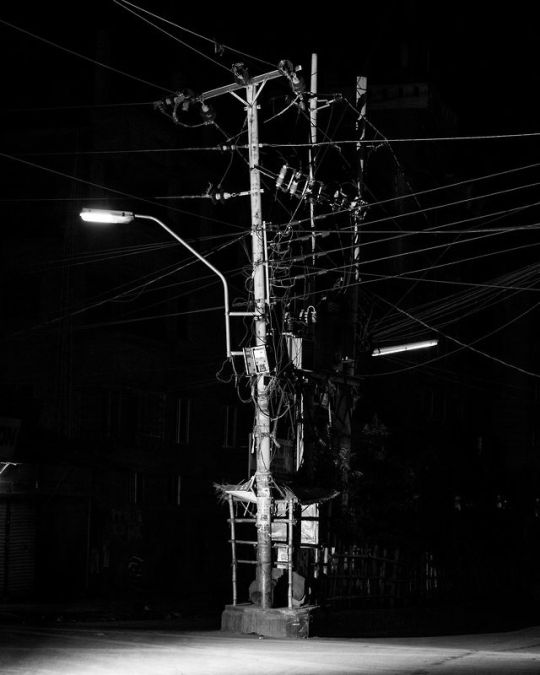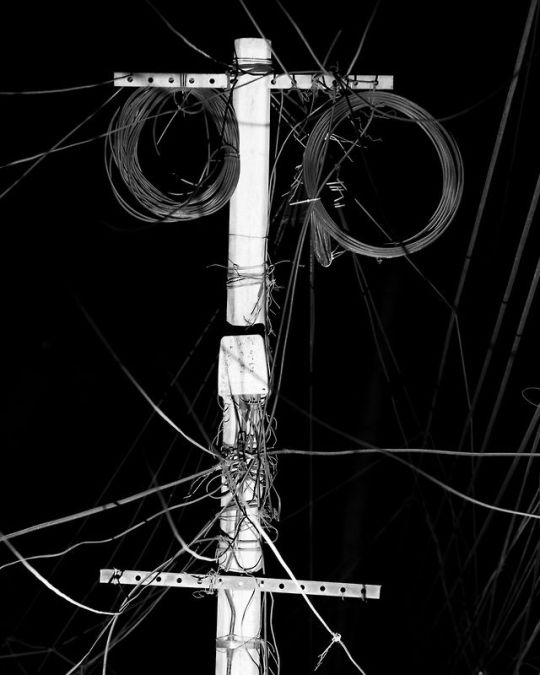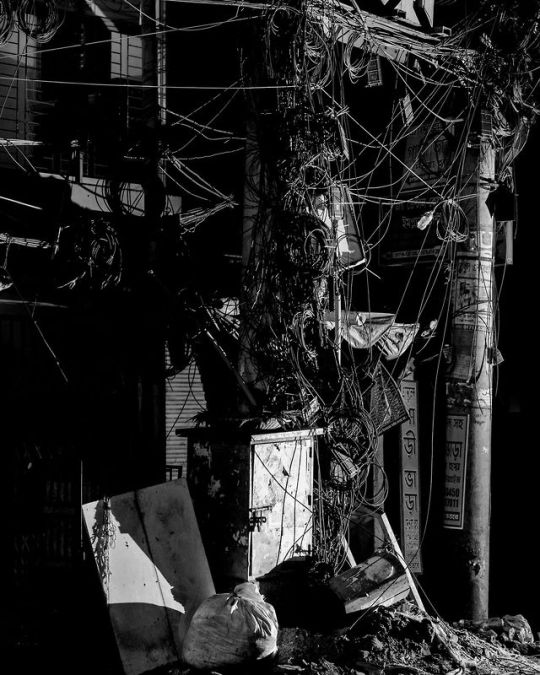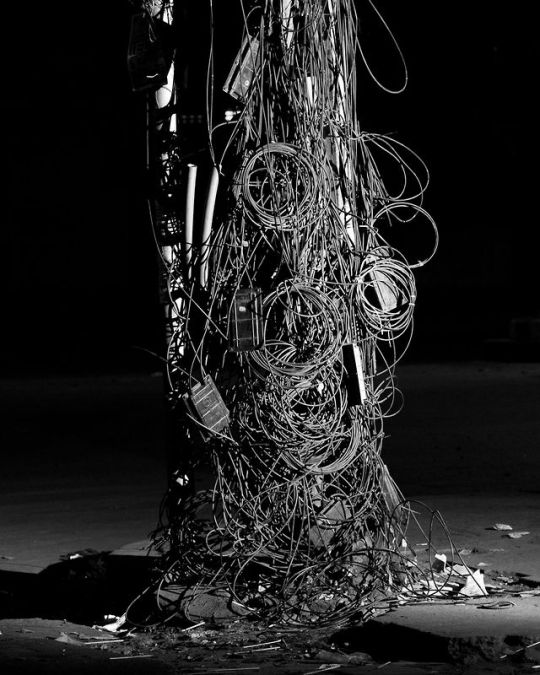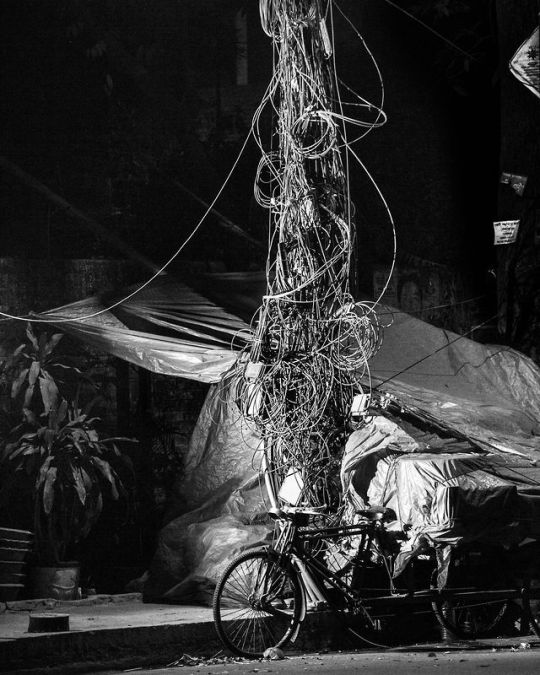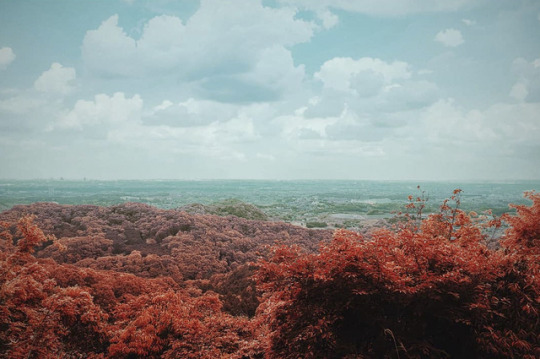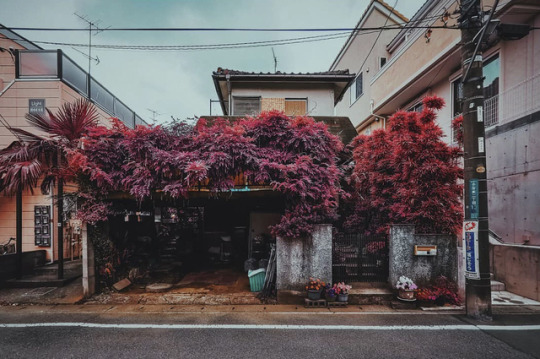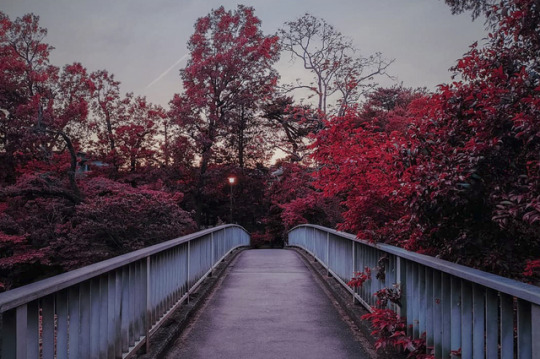Don't wanna be here? Send us removal request.
Link
Excerpt from this LA Times story:
In Arizona, cactus rustling — stealing or killing the state’s iconic saguaros — is a felony. It’s illegal to shoot or deface the iconic cactuses or to remove them from parks, where the slow-growing succulents can reach more than 60 feet and live up to 200 years. Violators are pursued by state agricultural police, or “cactus cops.”
That hasn’t stopped federal contractors from plowing over saguaros to make room for President Trump’s border wall.
At least a half-dozen saguaros were uprooted this month by crews clearing a dirt road next to new border fencing at Organ Pipe Cactus National Monument, about 150 miles southwest of Tucson, near the Lukeville border crossing.
Remains of the saguaros, some of which stood taller than the 30-foot wall, were dumped, under some other debris, near a hill that crews started blasting with explosives this month to build the wall. The company, Southwest Valley Constructors, has a $789-million contract from U.S. Customs and Border Protection to build 38 miles of border fence in the area.
“They have quite clearly tried to hide the body of this cactus,” said Laiken Jordahl, a former Organ Pipe park contractor who is now a campaigner for the Tucson-based Center for Biological Diversity, which has sued to stop the wall.
During a visit to the construction site last week, Jordahl took photos and video of what he called saguaro “carcasses.” He has posted footage online, spurring outrage. The cactuses are typically described in anthropomorphic terms: the outstretched branches are “arms”; the bare spines, “ribs”; and the “skeletons” of saguaros that died, evidently of natural causes.
It’s easy to see why Arizona’s Tohono O’odham tribe believe saguaros have spirits.
“They really all do have their own personalities,” Jordahl said. “Some of them have been here longer than the border itself. What right do we think we have to destroy something like that?”
Rep. Raúl M. Grijalva, an Arizona Democrat who represents the Organ Pipe area, and Ned Norris Jr., chairman of the Tohono O’Odham, which has about 35,000 members, of whom roughly half live in the reservation, visited the park together last month. They complained about the environmental damage border wall construction was causing and pleaded with the Border Patrol to stop and consult with local officials. Instead, in addition to destroying saguaros at Organ Pipe, construction crews used explosives this month to blast a path for the wall through Monument Hill, a Native American burial ground.
“Saying the Border Patrol cares about the environmental impacts of border wall construction is absurd to anyone who has seen the destruction at Organ Pipe,” said Grijalva, who led a hearing in Washington on Wednesday about the effect of border wall construction on indigenous communities. “Waived laws along the borderlands have facilitated this destruction at an alarming pace. If construction continues, the damage to the iconic saguaros of Southern Arizona will be irreparable.”
11 notes
·
View notes
Photo



End of the World Cinema
Located somewhere on the southern tip of the Sinai Peninsula in Egypt is this abandoned outdoor cinema.
It was built by Frenchman Diynn Eadel in the late 1990s, but suffered a power cut on what was supposed to be its premiere night. No one knows what went wrong, but some say the local authorities weren’t thrilled by the prospect of a movie theater in the middle of the desert and were the ones responsible for the generator’s malfunction.
The first movie it was supposed to screen was Jurassic Park, but the cinema never got to screen a single movie. The cinema has been closed off to tourist by the Egyptian government.
You can still see what remains of the cinema on Google Maps.
1st pic (ft photoshopped person) SOURCE
10K notes
·
View notes
Link
This story makes me think of the mentality of destruction. Put a human and shovel together, and the human digs. Put a human on a bulldozer, and the two together destroy. The digging may have nefarious purposes and it might be destructive, but even if it is, the damage is relatively insignificant. We can’t say that about the bulldozer. What does an engineer think when he plans where the bulldozer scrapes? What does the politician think when she/he approves the plan, or sees images of its outcome? What does the driver of the bulldozer think as she or she watches the blade of the bulldozer destroy everything in the way? I have a hard time imagining how a moral person can allow any of that to happen.
Excerpt from this story from the Sierra Club:
As shocking as the Trump administration’s most recent demolition of the desert wilderness has been, scientists and Interior Department officials say that it is just a continuation of the destruction that has been unfolding for years as US-Mexico border militarization has intensified.
Archaeologists Rick and Sandy Martynec are among those who have witnessed the erosion of environmental protections firsthand. For the past 25 years, the Martynecs, independent researchers, have been conducting archaeological surveys in Arizona along the US-Mexico border. In a roughly 20-by-20-mile stretch of desert, the husband and wife team has documented more than 600 distinct archeological sites, ranging from 10,000-year-old Paleo-Indian campsites to O’odham farming villages inhabited as recently as the 18th century.
As they’ve documented the rich historical and cultural records, the couple has seen a fragile desert ecosystem become a casualty of US border policy. About two decades ago, when the Martynecs were doing survey work in Cabeza Prieta National Wildlife Refuge at Las Playas—a series of dry lakebeds that once filled during the summer monsoon season—they frequently encountered wildlife, including coyotes, mountain lions, and more than a dozen bird species such as hummingbirds and owls. The pooling of the water in the lakebeds, which lie on both sides of the border, has sustained this unique desert environment.
But they have also observed something else: As the number of migrants coming across the border increased in the early 2000s, so too did the roads within the refuge, 90 percent of which is designated wilderness. Small, rarely used dirt tracks were becoming well-traveled multilane roads used primarily by Border Patrol agents. In the post-9/11 period, Border Patrol was granted expansive new powers and funding to police the border. In one instance, Rick Martynec measured a frequently used Border Patrol “corridor” that was at least 200 yards wide. “Until you actually see it, walk it, it just can’t be imagined,” Martynec said.
The new roads have begun to change the way water moves in this part of the Sonoran Desert. Now when seasonal rains occur, the water no longer flows into the playas but often runs in torrents along the roadways. “Almost every conceivable water source has been choked off by roads and by dams,” Martynec said.
This has had a devastating impact on the region’s ecology. Entire groves of mesquite trees and vegetation surrounding the playas have withered. The birds and mammals have largely disappeared. Martynec said that they haven’t seen a coyote out there in five or six years. The biologically complex desert soil—which was once home to ephemeral grasses and small trees and which can take decades to recover once disturbed—looks like a cracked moonscape. Around 2010, after completing their archaeological research in the region, some of it carried out on behalf of the Cabeza Prieta refuge, the Martynecs wrote a separate seven-page paper titled “The Death of Las Playas?”
The end of the story has an interesting perspective:
Due north of Las Playas is the Growler Valley, one of the most remote and deadly routes for migrants traveling through the desert. For the past several years, the humanitarian aid group No More Deaths has enlisted volunteers to leave water and food at various locations within the refuge.
But the Trump administration, with assistance from the Fish and Wildlife Service and other land-management agencies, has begun to crack down on their activities. At one trial, a federal judge said that the activists had undermined “the national decision to maintain the refuge in its pristine nature.” Earlier this year, four members of the group were convicted and several more currently face trial for, among other things, violating the Wilderness Act.
35 notes
·
View notes
Text
I Collected Every Item in Untitled Goose Game
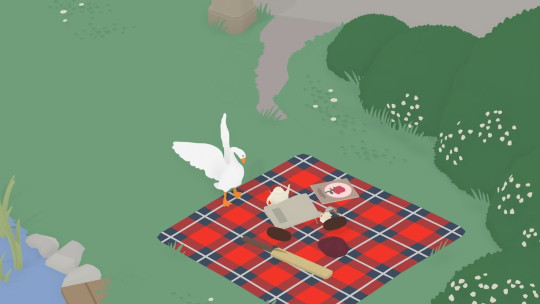
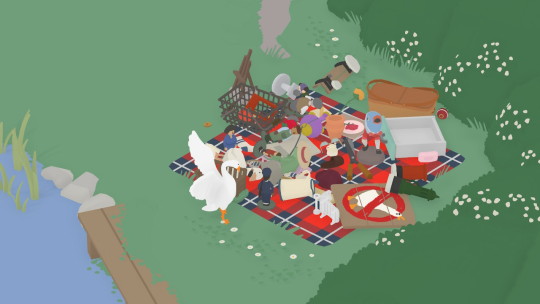
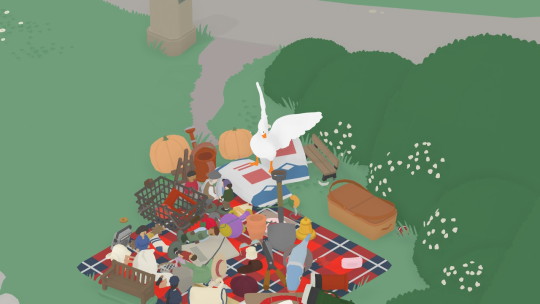
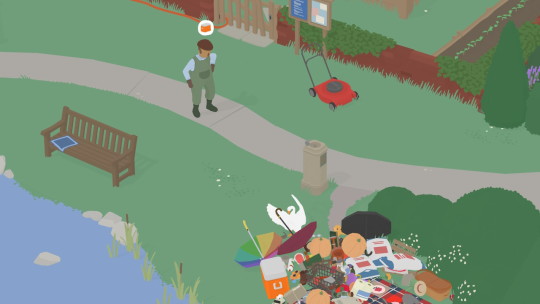
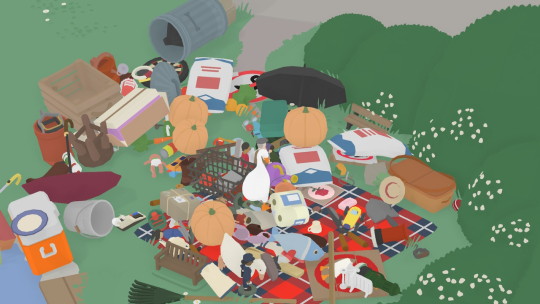
66K notes
·
View notes
Text
“As a type of play, anticipation obeys the same heuristics as other play spaces. An interesting anticipatory moment is one in which there are a small number of alternatives to consider and the alternatives are different from the alternatives we have seen before. Considering an alternative creates new opportunities for additional anticipation, and different alternatives lead us to different imaginary futures. We need to be able to predict roughly where various alternatives will lead us, but never be exactly sure. Finally, the process of anticipation should lead us to some satisfactory conclusion—at least one imagined future should feel superior to our present state.”
— Upton, Brian. The Aesthetic of Play. Cambridge, MA: The MIT Press, 2015.
2 notes
·
View notes
Text
I'm kinda meh about roof gardens/ grass roofs bc they can accumulate a lot of weight and collapse/ cause leaks
But living walls? Mighty sexy
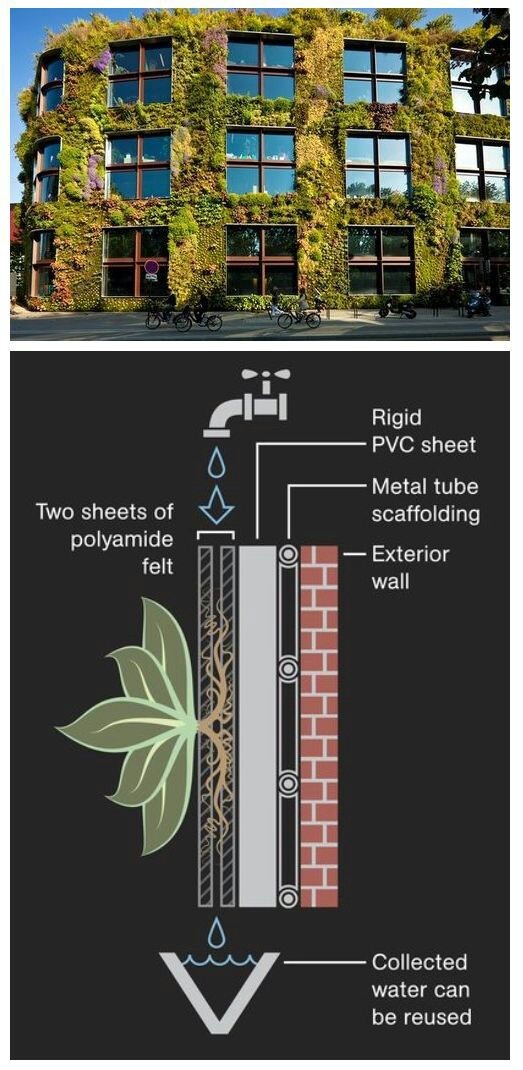
They provide natural insulation, which not only keeps the heat in during cold days, but keeps the heat out during hot ones. It's better planned and maintained than vines (depending on the plant ofc).
Flooding in urban areas can be reduced since the roots and the growing medium will hold in moisture. Air can be purified, and heat can be reduced because of evaporation.
I just love living walls
125K notes
·
View notes
Link
Why shouldn’t we provide a pass to Native Americans allowing them free access to our national parks and other public lands? Think about it. We took the land from their ancestors, who lived on those lands for a long, long, long time, longer than the invaders (i.e., the rest of us) have. We can ugly thoughts about it: it wouldn’t put much of a dent to any federal deficit. But then we think about it in terms of money. Or we can think the better way about it: it would be the right thing to do.
Excerpt from this story from the Nation of Change:
More than 20 years had passed since I last lived in the Southwest, and as we pitched our tent in Oak Creek Canyon and I plotted the week’s trails, I vowed to see the land and meet it where it was. Some things did not change, things I had somehow forgotten: the infinity pools at the top of mesas after an October rain, the sponginess of the wet soil under my boots, and the sound of mud falling off the bottom of the car like hail hitting pavement when we drove away. The enormous size of the crows and the way their wings make a scratching sound as they fly above you in a canyon.
Some things, on the other hand, did change: the cost of two eggs and a cup of coffee in downtown Sedona. The extra $10 per car and $2 per person fee at the start of the West Fork trail. The price of local real estate and the commercialization of the canyon with massage therapy, all-terrain vehicle tours, and other businesses catering to vortex seekers, outdoor enthusiasts, and retirees. The absurdity of the vision quest workshops and sweat lodge gurus charging tourists a mint.
When we approached the start of the West Fork trail, and a woman with a Make America Great Again hat told us we had to pay to use it, I broke down.
“It feels like Disneyland,” I told my husband. The trail fee wasn’t exorbitant. It was the principle of the thing. All around me I saw sacred beauty. My ancestors had wandered through here freely for centuries—it was their place to pray—but I saw no acknowledgement of my people or their memories. I had to pay a volunteer to visit.
The capitalism in Sedona struck me, the way New Age seekers and retirees had transformed the place into something unrecognizable. My poorest cousins in Yuma would never be able to afford this place. And I wondered, if I had the money, would I live here?
Everywhere I looked I saw where money had purchased our Nation’s treasures. I resented this fact, but at the same time I knew it was greedy to wish outsiders away from this beauty. The sacred is meant for all.
27 notes
·
View notes
Photo

NO TIME TO EXPLAIN GRAB A CACTUS
5 notes
·
View notes
Text
“What is it that you contain? The dead. Time. Light patterns of millennia opening in your gut. Every minute, in each of you, a few million potassium atoms succumb to radioactive decay. The energy that powers these tiny atomic events has been locked inside potassium atoms ever since a star-sized bomb exploded nothing into being. Potassium, like uranium and radium, is a long-lived radioactive nuclear waste of the supernova bang that accounts for you. Your first parent was a star.”
— Jeanette Winterson, Weight: The Myth of Atlas and Heracles
127 notes
·
View notes
Link
Excerpt from this New York Times story:
Heat-related deaths have increased sharply since 2014 in Nevada and Arizona, raising concerns that the hottest parts of the country are struggling to protect their most vulnerable residents from global warming.
In Arizona, the annual number of deaths attributed to heat exposure more than tripled, from 76 deaths in 2014 to 235 in 2017, according to figures obtained from the U.S. Centers for Disease Control and Prevention. Heat-related deaths in Nevada rose almost fivefold during the same period, from 29 to 139.
Most of those deaths were in the Phoenix and Las Vegas areas, according to state records.
The long-term health effects of rising temperatures and heat waves are expected to be one of the most dangerous consequences of climate change, causing “tens of thousands of additional premature deaths per year across the United States by the end of this century,” according to the federal government’s Global Change Research Program. The effect could be even more severe in other parts of the world, potentially making parts of North Africa and the Middle East “uninhabitable.”
The increase in deaths also illustrates how climate change can exacerbate other challenges. Experts say the death toll is likely to reflect the growing ranks of vulnerable groups, and the failure to protect those groups from global warming.
A particularly vulnerable group, experts say, are the homeless, especially in Maricopa County, which includes Phoenix. “The unsheltered homeless population in Maricopa County has risen every year by about 25 percent since 2014,” said Lisa Glow, chief executive officer of Central Arizona Shelter Services. “We have been turning away hundreds monthly who need shelter.”
She said that reflects rising housing costs as the county’s population grows, as well as a reduction in the number of emergency shelter beds.
Data compiled by the county’s public health department show that the homeless represent a fast-growing share of heat deaths.
Data suggest the number of homeless people in Las Vegas has fallen since 2014. A better explanation for the increase in heat-related deaths may be the rising number of older residents, according to Erick Bandala, a professor of environmental science at the Desert Research Institute in Las Vegas.
Not only are older adults more susceptible to the physical effects of heat, they’re also more likely to live alone with no one to check on them.
9 notes
·
View notes
Link
Excerpt from this USA Today story:
Megadroughts – defined as intense droughts that last for decades or longer – once plagued the Desert Southwest. In fact, from the 9th to the 15th centuries, at least a dozen medieval megadroughts occurred across the region, scientists said.
Now, a study suggests that because of the drying influence of climate change, megadroughts could return to the region.
Megadroughts are defined more by their duration than their severity. They are extreme dry spells that can last for a decade or longer, according to the National Oceanic and Atmospheric Administration.
They’ve parched the West, including present-day California, long before Europeans settled the region in the 1800s.
How do scientists know how wet or dry it was centuries ago? Though no weather records exist before the late 1800s, scientists can examine paleoclimatic “proxy data,” such as tree rings and lake sediment, to find out how much – or little – rain fell hundreds or even thousands of years ago.
If scientists can understand why megadroughts happened in the past, it can help better predict whether, how and where they might happen in the future, the new study said.
“In our paper, we present the first comprehensive theory for what caused historical megadroughts, which happened during the medieval period but not after about the year 1600,” said study lead author Nathan Stieger of Columbia University’s Lamont-Doherty Earth Observatory. “We find that they were caused by severe and frequent La Niñas, a warm Atlantic Ocean, and a net increase in energy from the sun.”
The study also suggests an increasing risk of future megadroughts in the American Southwest because of climate change.
10 notes
·
View notes
Link
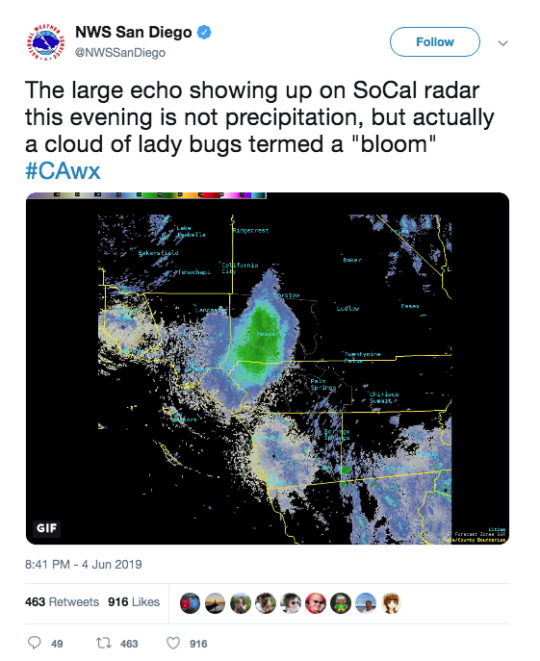
Excerpt from this Desert Sun story:
It was cloudy with a chance of ladybugs on Tuesday evening, according to radar footage from the National Weather Service, which showed a swarm of the colorful beetles heading south through San Bernardino and Riverside counties.
The weather service’s San Diego office posted a series of images on Tuesday night, showing a mass moving southward from San Bernardino County towards the western tip of Riverside County.
The movement, one official said, was a swarm of ladybugs.
“If you look at the satellite for that area, there weren’t a lot of clouds,” said Casey Oswant, a weather service meteorologist in the San Diego office. “This radar return was much larger than what those clouds could’ve been producing.”
Oswant said weather spotters in the San Bernardino area verified that the radar returns were coming from ladybugs rather than clouds. The “swarm,” she said, was not very dense.
Oswant said she was not able to verify where the ladybugs came from or where they were heading. She said, however, she saw the ladybugs moving southward as of Wednesday morning. They were off the radar’s perimeters before noon on Wednesday.
8 notes
·
View notes
Video
vimeo
“how the terms ‘mind’ and ‘matter’ are abstractions which in their concreteness are identical”
[ video and soundtrack ]
Instead, the stories could become worlds inhabited by things that keep slipping beyond our grasp. Things which lurk at the back of our mind, on the tip of our tongue, just out of reach. Stories with protagonists that can only be known as gaps in being. The spaces they leave. Not here and not quite there yet. Dwelling on the peripheries of the sensible, speaking in glimmers, shimmers, suggestions.
These stories may not even have words. They might be felt rather than told. In sound, scent, touch and light. The stories might be experienced at the limits of the visible spectrum, pulsing at ultraviolet or infrared frequencies. They might inhabit the radio spectrum or create divergencies across the spectrum of acceptable behaviours. Spectral stories, stories of cosmic spectra and planetary spectres. The folk tales of unquiet matter.
“I have sought to show how the terms ‘mind’ and 'matter’ are abstractions which in their concreteness are identical” —Peter Sjöstedt-H
Recorded and composed in the Sonoran Desert, Seili, the Kii peninsula, Istria, Helsinki, Brussels and Elsewhere during 02018 and 02019 by Maja Kuzmanovic and Nik Gaffney
6 notes
·
View notes
